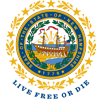In the News
Contact
We've come a long way
Safely reopening schools in September
On January 29, 2020, long before the public was aware of COVID-19, the Department of Education provided its first Health Alert to school leaders about a developing health concern. Of course at that time, we could not have known the devastating effects of COVID, but school systems always need to be prepared, even for a bad flu season.
That was followed up with a Webinar for school leaders on February 3, 2020 with New Hampshire public health officials, to brief them on this developing health risk. This follow up continued with weekly and then multiple times per week briefings through March 9, 2020, with information on school trips, quarantine protocols, and ultimately, our first guidance on the transition to remote instruction.
On March 15, 2020, the Governor issued his first Emergency Order #1, Temporary Remote Instruction and Support for Public K-12 School Districts.
We have come a long way since those initial actions.
When we first transitioned to remote instruction and support, we did not know what the infections or death rates might be for this disease. We did not understand how it was transmitted or who was vulnerable. Therapeutic treatments were uncertain and we did not understand the many protective factors to COVID. The global shortage of personal protective equipment sent our state on a global scavenger hunt. Let’s thank Dean Kamen and Perry Plummer for securing literally tons of PPE for New Hampshire. There was uncertainty about hospital capacity. Testing for this disease was only emerging. Some of the testing we use today had not yet been invented. Contact tracing on this scale had not been contemplated and needed a rapid response.
Today, we are in a very different place.
We have vastly more knowledge and information about this disease; infection and death rates, how it is transmitted, who is vulnerable and various treatment protocols; the protective factors for individuals, commercial supplies of PPE and a hospital system ready to respond; broad community testing and a robust contact tracing response. We now have a far better understanding of how the disease moves in our community and how we can mitigate widespread infection.
All of this knowledge, among many other inputs, has gone into our plans to safely reopen schools in September. We can now safely conduct in-person instruction and provide accommodations for students and staff with underlying health risks that create vulnerabilities. We can implement effective hygiene and cleaning protocols to keep students, staff and communities safe, and implement mitigation strategies where needed. We can have effective response plans that allow us to limit the effects of an incident of COVID and continue with our educational mission. No one policy or procedure is fool-proof, but by implementing sound steps based on what we’ve learned about this virus, we can build layers of protection for students and school staff.
Just as all students are different, our schools are different, each facing unique challenges in reopening safely. That’s why the guidance we have provided to schools gives them flexibility to implement best practices in a way that makes the most sense for their communities. By combining good hygiene and social distancing with mitigation and accommodation efforts, and having a robust response plan at the ready, each city and town in New Hampshire can craft a safe and effective return to school.
We are not the first to travel down this road. 20 countries have already opened educational institutions. We have studied their experiences and incorporated their lessons into our plans about what works and what does not work. We can safely engage the work of crafting bright futures for the next generation of Granite Staters.
This is only possible because of the character, resourcefulness, and resiliency of New Hampshire citizens.
On behalf of the New Hampshire students, thank you, one and all.
Frank Edelblut is Commissioner of the New Hampshire Department of Education.




